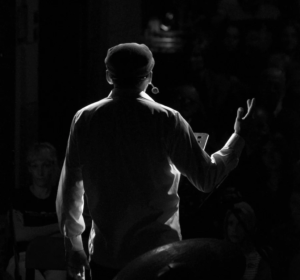After a summer away from writing while touring Quebec’s fitness world, I can say more people are moving and are reconsidering traditional workouts in favour of bodyweight and intense cardio training.
There are unlimited ways to move, and lately what I’ve seen is that, “Everyone loves to train on tires.” It’s no wonder. While it looks easy, just one minute of pop squats will elevate your cardio workout and contract those hidden, or deep stabilizing and synergistic muscles.
Let’s get those hidden muscles to work? I heard that comment a few years ago in the gym and frankly, what does that mean? Do I need a new course? Do I need a trainer specializing in and certified in hidden muscle training? Wait a minute? Are we talking “deep” muscles, or is the term “hidden” a Muscle & Fitness magazine phrase from the 90s?
So back to Facebook and Messenger to my former trainer.“I now have hidden muscles?”
He’s shaking his head. I can just see him? “Those are the muscles that anticipate and contract prior to initiating movement.”
“Is there a movement for that?” I’m half joking, half serious.
“Try doing little jumps on a tire for a minute? Pop squat on tires?”
Considered a functional exercise that increases stamina and energy, the pop squat on a tire is an exercise that can be performed by beginners. Basically, instead of jump squats, you pop!
Place a tire flat on the floor or ground. Stand in the center of the tire and bend down slightly. Hop upward and land on the tire in a squat position with both feet on opposite sides of the tire. Remain on the tire and hop again and return to the starting position at the center of the tire. You can start with your feet already on the tire, squat down like you are sitting and then pop off the tire and land in the same area.
The pop squat is an interesting variation of regular squats that is effective in working the glutes, hamstrings, quads and core muscles. They also work those deep muscles, or deep myofascial muscles such as the transverse abdominal muscle (referred to often as your natural belt), the psoas, and intersegmental spinal muscles, just to name a few.
“Hey, you there?” Oh right, Facebook.
“Yes, just looking things up.”
“The deep muscles are packed with sensors. They are very dense in these muscles compared to the larger surface muscles that help us move, but they all work together,” explains my former trainer.
“So…these little ones stabilize and support the bigger muscles?”
“Yes, they start deep and work best when alignment and breathing are optimal.”
Land softly on your feet into a squat position to lessen the impact. The tire has enough give to cushion the landing, and your feet do not always land the same way, which logically means you are working those deep muscles differently on each landing.
Everyone loves to train on tires!






